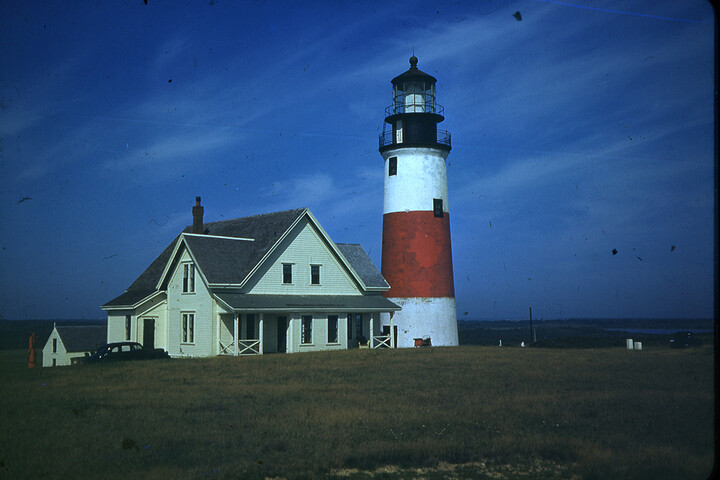
National Lighthouse Day and The Lighthouse Act of 1789
By Michelle Cartwright Soverino
On this day 230 years ago, The Lighthouse Act of 1789 was approved by Congress, ensuring the upkeep and repair of Lighthouses, Beacons, Buoys, and Public Piers “shall be defrayed out of the treasury of the United States.” Two of Nantucket’s three lighthouses were built before the Act was in place: Brant Point Lighthouse and Great Point Lighthouse.
In recognition of the 200th Anniversary of the signing of the Act and the commissioning of the first Federal lighthouse, Congress passed a resolution which designated August 7, 1989 as National Lighthouse Day. Today marks its 30th Anniversary.
As we celebrate National Lighthouse Day and remember The Lighthouse Act of 1789 that secured Nantucket's beacons in perpetuity, we hope you will read on to enjoy a bit of history of the island's iconic landmarks.
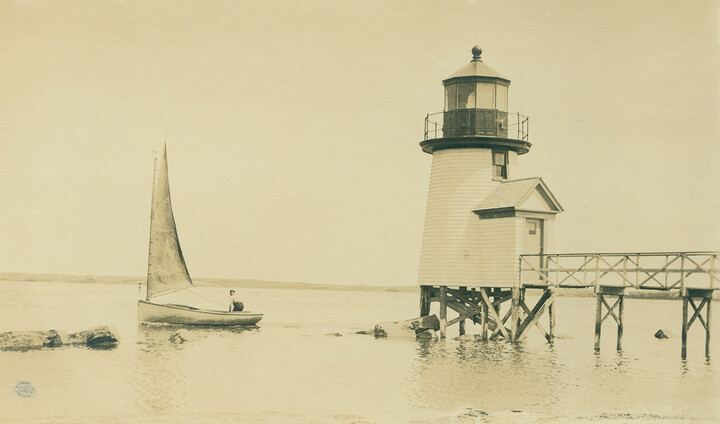
Brant Point Lighthouse, circa 1927.
Brant Point Lighthouse survived the American Revolution, witnessed the great age of Nantucket whaling, and has welcomed hundreds of thousands of visitors to Nantucket. First built in 1746, Brant Point was rebuilt eight times: in 1758, 1774, 1784, 1786, 1788, 1825, 1856, and again in 1901.The first structure was destroyed by fire in 1757, no doubt started by the whale-oil lamp used at that time. The early lamps were not known for being robust, and had a wick fitted into a spout connected to an oil reservoir. Because of this, lighthouse keepers were known as “wickies.”
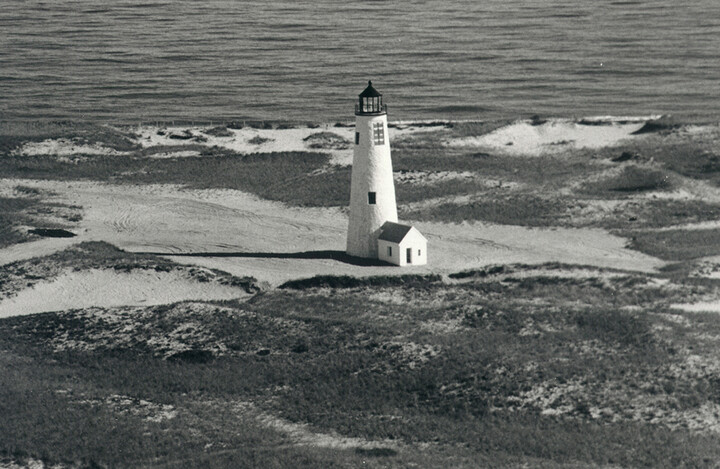
Great Point Lighthouse circa 1980.
In 1770 the Nantucket town fathers created a committee to ask the General Court of the Massachusetts Bay Colony to build a lighthouse at the end of Sandy Point, today known as Great Point. With no positive response, the issue languished through the Revolutionary War. Finally, Great Point Lighthouse was built in 1784, but was known then as Nantucket Light. In 1857, the lighthouse was enhanced with a new Fresnel Lens, which is now on display at the Nantucket Shipwreck & Lifesaving Museum. Following a fire in 1816, the lighthouse was rebuilt in 1818, and then again in 1986 after it crumbled during a storm in 1984.
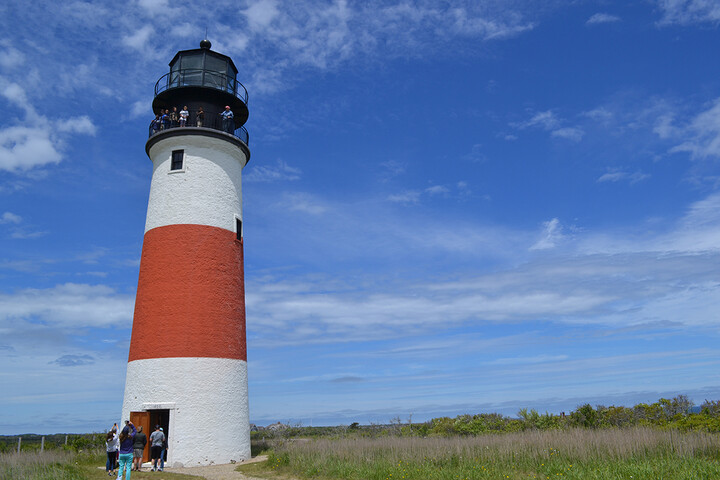
Sankaty Lighthouse circa 2016.
Nantucket’s third Lighthouse, Sankaty Head, was built in 1850 and first illuminated on February 1 of that year. Built on the edge of a cliff about 100 feet above the ocean, it was farther at sea than any other Atlantic coast lighthouse. The bricks, granite blocks, and other building materials were brought via schooner by contractor, Cabot King, of Hingham Massachusetts. The original sixty-foot brick tower topped with a granite turret was built for $10,330. Though Sankaty has never been rebuilt, in 2007 the lighthouse was moved some 400 feet inland as the erosion of Siasconset Bluff put the structure in danger.
Stop by the Nantucket Shipwreck & Lifesaving Museum to learn more about Nantucket’s lighthouses and their role in lifesaving.

Brant Point Lighthouse circa 1890s.
The text for the original 1789 act:
An Act for the Establishment and support of Lighthouse, Beacons, Buoys, and Public Piers.
Section 1. Be it enacted by the Senate and House of Representatives of the United States of America in Congress assembled,
That all expenses which shall accrue from and after the fifteenth day
of August one thousand seven hundred and eighty-nine, in the necessary
support, maintenance and repairs of all lighthouses, beacons, buoys and
public piers erected, placed, or sunk before the passing of this act, at
the entrance of, or within any bay, inlet, harbor, or port of the
United States, for rendering the navigation thereof easy and safe, shall
be defrayed out of the treasury of the United States: Provided
nevertheless, That none of the said expenses shall continue to be so
defrayed by the United States, after the expiration of one year from the
day aforesaid, unless such lighthouses, beacons, buoys and public
piers, shall in the mean time be ceded to and vested in the United
States, by the state or states respectively in which the same may be,
together with the lands and tenements thereunto belonging, and together
with the jurisdiction of the same.
Sec. 2. And be it further enacted, That a lighthouse shall be erected near the entrance of the Chesapeake Bay, at such place, when ceded to the United States in manner aforesaid, as the President of the United States shall direct.
Sec. 3. And be it further enacted, That it shall be the duty of the Secretary of the Treasury to provide by contracts, which shall be approved by the President of the United States, for building a lighthouse near the entrance of the Chesapeake Bay, and for rebuilding when necessary, and keeping in good repair, the lighthouses, beacons, buoys, and public piers in the several States, and for furnishing the same with all necessary supplies; and also to agree for the salaries, wages, or hire of the person or persons appointed by the President, for the superintendence and care of the same.
Sec. 4. And be it further enacted, That all pilots in the bays, inlets, rivers, harbors and ports of the United States, shall continue to be regulated in conformity with the existing laws of the States respectively wherein such pilots may be, or with such laws as the States may respectively hereafter enact for the purpose, until further legislative provision shall be made by Congress. Approved: August 7, 1789
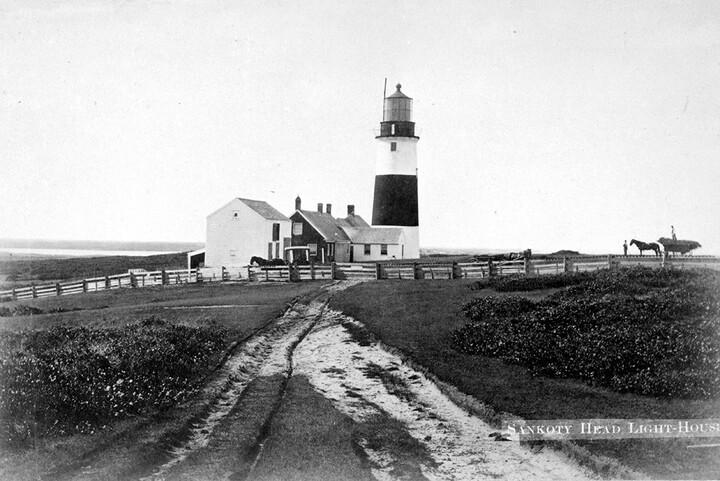
Sankaty Lighthouse circa 1880.